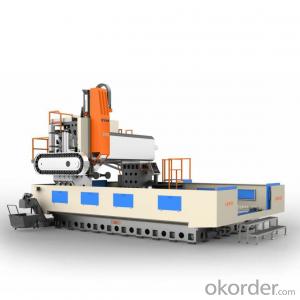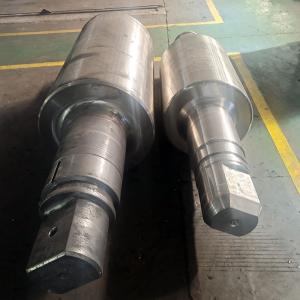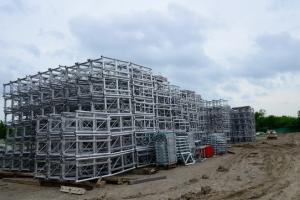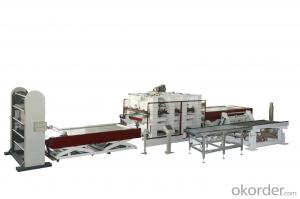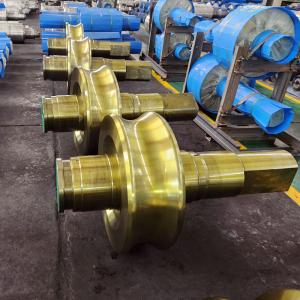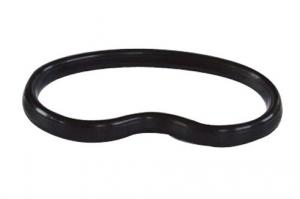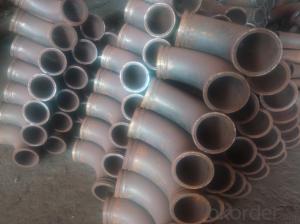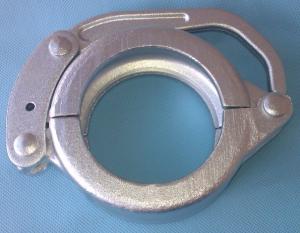SANY Tungsten Carbide Spectacle Plate and Wear Ring DN200
- Loading Port:
- Tianjin
- Payment Terms:
- TT or LC
- Min Order Qty:
- 3 pc
- Supply Capability:
- 1000 pc/month
OKorder Service Pledge
OKorder Financial Service
You Might Also Like
Product Name: SANY Tungsten Carbide Spectacle Plate and Wear Ring DN200
1. Specification
1. Material: Plate body S35C steel, tungsten carbide E5 grade ,
2. Lifetime: 30,000~80,000cbm
3. HRA≥86
4. Germany Welding rod used for hardfacing
5. tensile strength ≥ 2500 N/mm2
6. Application: trailer and trunk mounted Sany concrete pump
Notes: total series of Concrete Pump Spectacle Wear Plate and Cutting Ring for different brand concrete pump (PUTZMEISTER, SCHWING, CIFA, SANY, ZOOMLION, IHI, KYOKUTO,Niigata Etc) available from us.
2. Application
Our SANY Tungsten Carbide Spectacle Plate and Wear Ring DN200 have been successfully exported to many countries from 1998, Our main markets as below: Middle East, Southeast Asia, America, Brazil, Italy, Russia, South Africa etc
Aiming at the largest concrete pump parts manufacturer, and reliable, professional supplier in China, we can supply concrete pump elbows, delivery pipes, casting or forging couplings, end rubber hoses, rubber pistons, tungsten wear plates, delivery cylinders, and other hydraulic parts, one stop service for your concrete pump parts and accessory business.
3. Package
Every 60pcs SANY Tungsten Carbide Spectacle Plate and Wear Ring DN200 put in one seaworthy wooden box, and 20 boxes in one 20feet container.
FAQ:
Q1: Why buy Materials & Equipment from us?
A1: All products have its ISO certifications, adheres to the highest standards and a commitment to supply chain safety and customer satisfaction.
Q2: How do we guarantee the quality of our products?
A2: We have established an advanced quality management system which conducts strict quality tests at every step, from raw materials to the final product. At the same time, we provide extensive follow-up service assurances as required.
Q3: How soon can we receive the product after purchase?
A3: Within three days of placing an order, we will begin production. The specific shipping date is dependent upon international and government factors, but is typically 10 to 30 workdays.
Q4: If we can produce some SANY Tungsten Carbide Spectacle Plate and Wear Ring DN200 according to customers request?
A4: Yes, we can produce SANY Tungsten Carbide Spectacle Plate and Wear Ring DN200 according to the difference country situations and different concrete pump to make it suitable to the market and customers. We have very professional technical team to make the design.
Q5: How to make a quick resolution for after service?
A5:We have overseas branches all-around of world, IF needed, the seller shall dispatch 2 engineers to the buyer's site for supervision of training. The buyer shall make available of necessary facilities &skilled personnel at site for training.
Images:

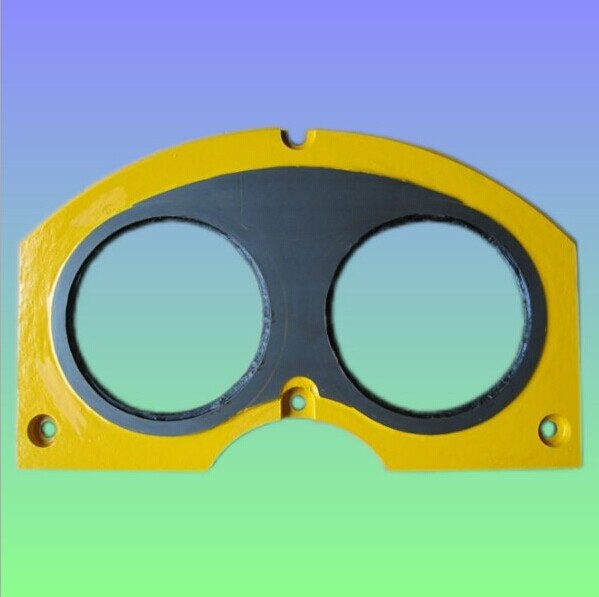

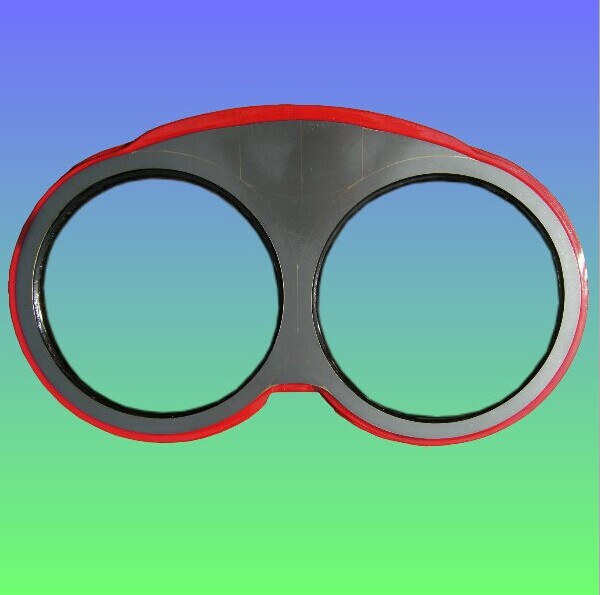
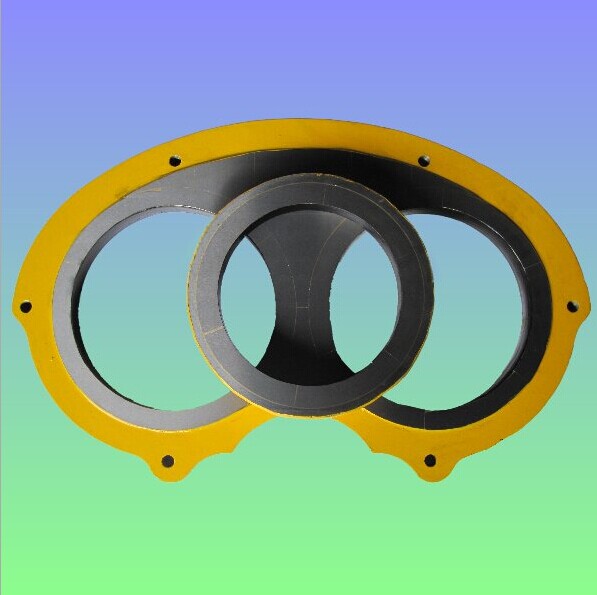
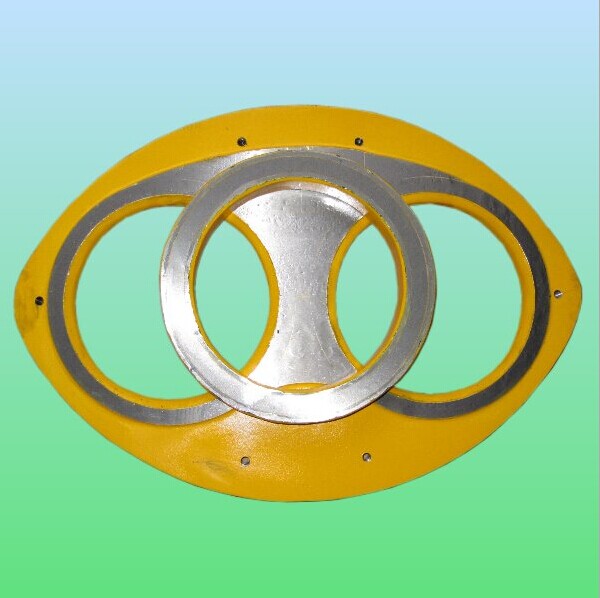
- Q:Can I use alternative materials for concrete pump spare parts?
- Using alternative materials for concrete pump spare parts is indeed possible. Nevertheless, it is crucial to carefully assess the specific requirements and performance characteristics of the parts prior to making any substitutions. Concrete pump spare parts are engineered to endure high pressures and abrasive materials, hence it is imperative to opt for alternative materials that can withstand these conditions. To guarantee that the chosen alternative materials do not compromise the concrete pump's performance or safety, it is advisable to seek guidance from the manufacturer or a professional in the field.
- Q:How do I properly adjust and control flow rates in concrete pump spare parts?
- To properly adjust and control flow rates in concrete pump spare parts, you should start by examining the pump's manual and understanding its specific settings and controls. It's important to ensure that all valves and levers are in the correct position and functioning properly. Additionally, you can adjust the flow rate by manipulating the stroke length and speed of the pump. Experimenting with these settings while monitoring the flow rate will help you achieve the desired results. Regular maintenance and cleaning of the pump parts are also crucial to ensure smooth flow control.
- Q:How often should hopper agitator shaft bearings be inspected or replaced in a concrete pump?
- The frequency of inspecting or replacing hopper agitator shaft bearings in a concrete pump can depend on various factors such as the manufacturer's recommendations, the operating conditions, and the maintenance history of the pump. However, as a general guideline, it is recommended to inspect these bearings at least once a year or every 500-1000 hours of operation, whichever comes first. Regular inspections should include checking for any signs of wear, damage, or excessive play in the bearings. If any abnormalities are detected during the inspection, immediate action should be taken to address the issue. In some cases, lubrication or adjustment may be sufficient to resolve minor problems, while more severe damage or wear may require the replacement of the bearings. It is important to note that the hopper agitator shaft bearings play a crucial role in the smooth and efficient operation of the concrete pump. Neglecting regular inspections or delaying necessary replacements can lead to increased downtime, reduced productivity, and potential safety hazards. Therefore, it is recommended to follow the manufacturer's guidelines and consult with experienced technicians or specialists for a more accurate assessment of the inspection and replacement intervals specific to your concrete pump.
- Q:What are the different sizes of concrete pump pipes available?
- The sizes of concrete pump pipes typically range from 2 inches to 6 inches in diameter.
- Q:How can a malfunctioning hydraulic motor affect the pumping process?
- Various negative effects can occur in the pumping process due to a hydraulic motor malfunction. Firstly, there may be a decrease in pumping efficiency. The hydraulic motor is responsible for converting hydraulic energy into mechanical energy, which drives the pumping mechanism. If the motor is not functioning properly, it may not generate enough power to operate the pumping system effectively, resulting in a decrease in the volume or pressure of the pumped fluid. Moreover, an increase in energy consumption can be caused by a faulty hydraulic motor. Inefficient or faulty motor operation can lead to higher energy requirements to maintain the desired pumping rate. This increased energy consumption can result in higher operating costs and reduced overall system performance. Furthermore, irregular pumping or complete pump failure can occur as a result of a malfunctioning hydraulic motor. If the motor is not operating correctly, it may cause intermittent or inconsistent pumping, leading to fluctuations in the flow rate or pressure of the pumped fluid. In extreme cases, the motor may stop working entirely, resulting in a total loss of pumping functionality. Additionally, the entire pumping system may experience increased wear and tear due to a malfunctioning hydraulic motor. Improper motor operation can create excessive vibration or heat, leading to premature failure of other components such as seals, bearings, or pistons. This can result in frequent maintenance or repair requirements, leading to increased downtime and costs. In summary, the pumping process can be significantly affected by a malfunctioning hydraulic motor. This includes decreased efficiency, increased energy consumption, irregular pumping or complete pump failure, and increased wear and tear on the system. It is essential to regularly inspect and maintain hydraulic motors to ensure proper functioning and avoid potential issues that may disrupt the pumping process.
- Q:Can concrete pump spare parts be resold or traded in for new parts?
- Yes, concrete pump spare parts can be resold or traded in for new parts. Many suppliers and manufacturers offer buyback or exchange programs where customers can return their used parts and receive credit towards purchasing new ones. Reselling used parts is also common in the construction industry, as there is a demand for affordable alternatives to new parts. However, the resale value may vary depending on the condition and market demand for specific spare parts.
- Q:What are the advantages of using OEM (Original Equipment Manufacturer) concrete pump spare parts?
- There are several advantages of using OEM concrete pump spare parts. Firstly, OEM parts are specifically designed and manufactured by the original equipment manufacturer, ensuring a perfect fit and compatibility with your concrete pump. This results in optimal performance and efficiency, minimizing downtime and costly repairs. Secondly, OEM parts are made from high-quality materials, meeting strict industry standards and specifications. This guarantees durability and longevity, reducing the need for frequent replacements. Additionally, OEM parts often come with warranties, providing peace of mind and protection against any manufacturing defects. Lastly, using OEM parts ensures the preservation of your concrete pump's warranty and resale value. Overall, opting for OEM concrete pump spare parts ensures reliability, performance, and cost-effectiveness in the long run.
- Q:How does a concrete pump agitator motor prevent concrete from settling?
- Constantly agitating the mixture, a concrete pump agitator motor prevents the settling of concrete. Typically equipped with rotating paddles or blades inside the mixing drum, the motor ensures that the concrete remains in a homogeneous state. During transportation, concrete tends to separate as gravity and the natural settling of heavier aggregates take effect. This can lead to a non-uniform consistency, with denser materials sinking and water rising. To counteract this settling process, the agitator motor stirs the concrete continuously. By creating a turbulent flow within the mixing drum, the rotating paddles or blades prevent the heavier aggregates from settling, thus maintaining a consistent mixture. This agitation helps distribute the cement, aggregates, water, and any additional additives evenly throughout the concrete, resulting in a more reliable and uniform end product. By preventing concrete settling, the agitator motor ensures that the mixture remains consistently workable, free from blockages or inconsistencies, and suitable for pumping or pouring. This is particularly crucial in construction projects that require precise and consistent concrete placement. In conclusion, the agitator motor in a concrete pump prevents settling by continuously agitating the mixture, thus maintaining its homogeneity and ensuring a consistent flow during pumping or pouring operations.
- Q:How can a faulty concrete pump control valve affect the pumping operation?
- The pumping operation can be adversely affected by a defective control valve for the concrete pump. To begin with, it can result in a lack of control over the rate at which the concrete flows. The control valve is responsible for regulating the quantity of concrete being pumped, and if it is faulty, it may not be able to adjust the flow rate accurately. This can lead to an inefficient operation due to an excessive or insufficient amount of concrete being pumped. Moreover, an unreliable control valve can cause inconsistent flow of the concrete. The valve is designed to maintain a steady and consistent flow, but if it is not functioning properly, it can cause fluctuations in the flow. As a consequence, the concrete may be distributed unevenly, thus affecting the quality and integrity of the pumped concrete. Additionally, a faulty control valve can contribute to accelerated wear and tear on the pump and other components. When the valve does not operate correctly, it can subject the pump to excessive pressure or strain, resulting in increased wear on the equipment. Consequently, breakdowns may occur more frequently or repairs may be needed, which can be both time-consuming and expensive. On the whole, a defective control valve for the concrete pump can have a significant impact on the pumping operation by causing a loss of control over the flow rate, inconsistent flow of the concrete, and increased wear and tear on the equipment. It is crucial to regularly inspect and maintain the control valve to ensure its proper functioning and prevent these negative consequences.
- Q:How can I determine if the concrete pump cylinder needs replacement?
- To determine if the concrete pump cylinder needs replacement, you can perform a few inspections and tests. 1. Visual inspection: Look for any visible signs of wear and tear on the cylinder, such as cracks, dents, or corrosion. Additionally, check for any leaks or excessive hydraulic fluid around the cylinder. 2. Performance evaluation: Pay attention to the pump's performance during operation. If you notice a decrease in pumping efficiency, irregular flow, or decreased pressure, it could indicate a problem with the cylinder. 3. Pressure testing: Conduct a pressure test to determine if the cylinder can handle the required pressure. This can be done by isolating the cylinder and pressurizing it to a level higher than what it typically experiences during operation. If the cylinder fails to maintain pressure or shows signs of leakage, it may be time for a replacement. 4. Cylinder stroke measurement: Measure the stroke length of the cylinder during operation. Uneven stroke lengths can indicate internal damage to the cylinder and may require replacement. 5. Consultation with experts: If you are unsure about the condition of the cylinder, it is advisable to consult with professionals or experts in the field. They can provide you with a more accurate assessment and recommend the appropriate course of action, which may include cylinder replacement. Keep in mind that regular maintenance and inspections are crucial for the longevity and efficient operation of the concrete pump. It is always better to address potential issues early on to avoid further damage or accidents.
1. Manufacturer Overview |
|
|---|---|
| Location | |
| Year Established | |
| Annual Output Value | |
| Main Markets | |
| Company Certifications | |
2. Manufacturer Certificates |
|
|---|---|
| a) Certification Name | |
| Range | |
| Reference | |
| Validity Period | |
3. Manufacturer Capability |
|
|---|---|
| a)Trade Capacity | |
| Nearest Port | |
| Export Percentage | |
| No.of Employees in Trade Department | |
| Language Spoken: | |
| b)Factory Information | |
| Factory Size: | |
| No. of Production Lines | |
| Contract Manufacturing | |
| Product Price Range | |
Send your message to us
SANY Tungsten Carbide Spectacle Plate and Wear Ring DN200
- Loading Port:
- Tianjin
- Payment Terms:
- TT or LC
- Min Order Qty:
- 3 pc
- Supply Capability:
- 1000 pc/month
OKorder Service Pledge
OKorder Financial Service
Similar products
New products
Hot products
Related keywords

















